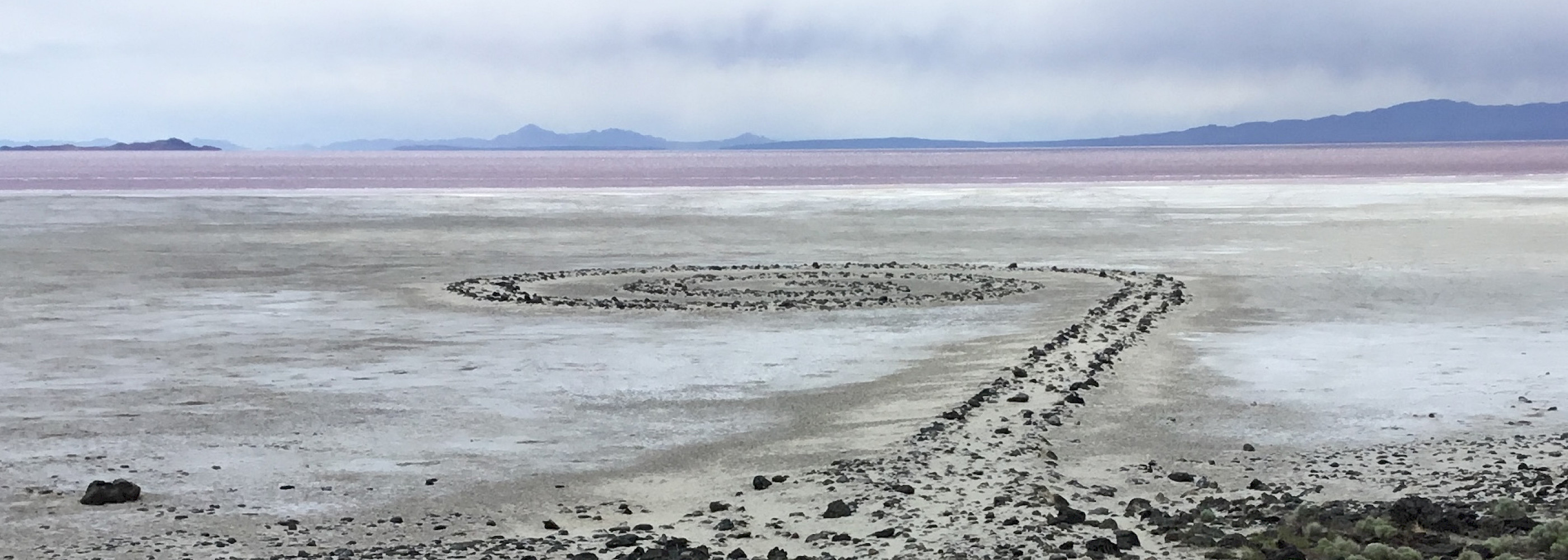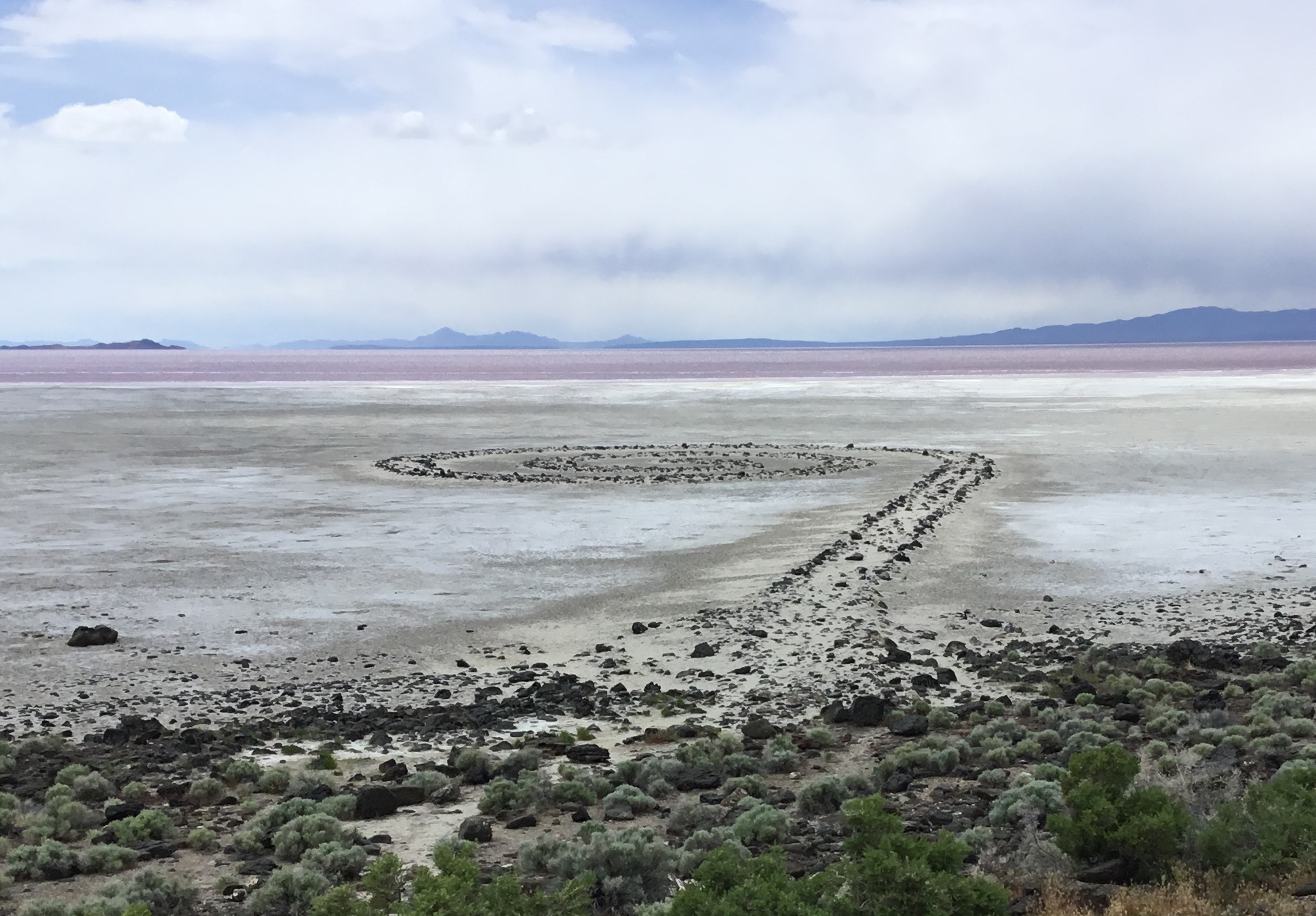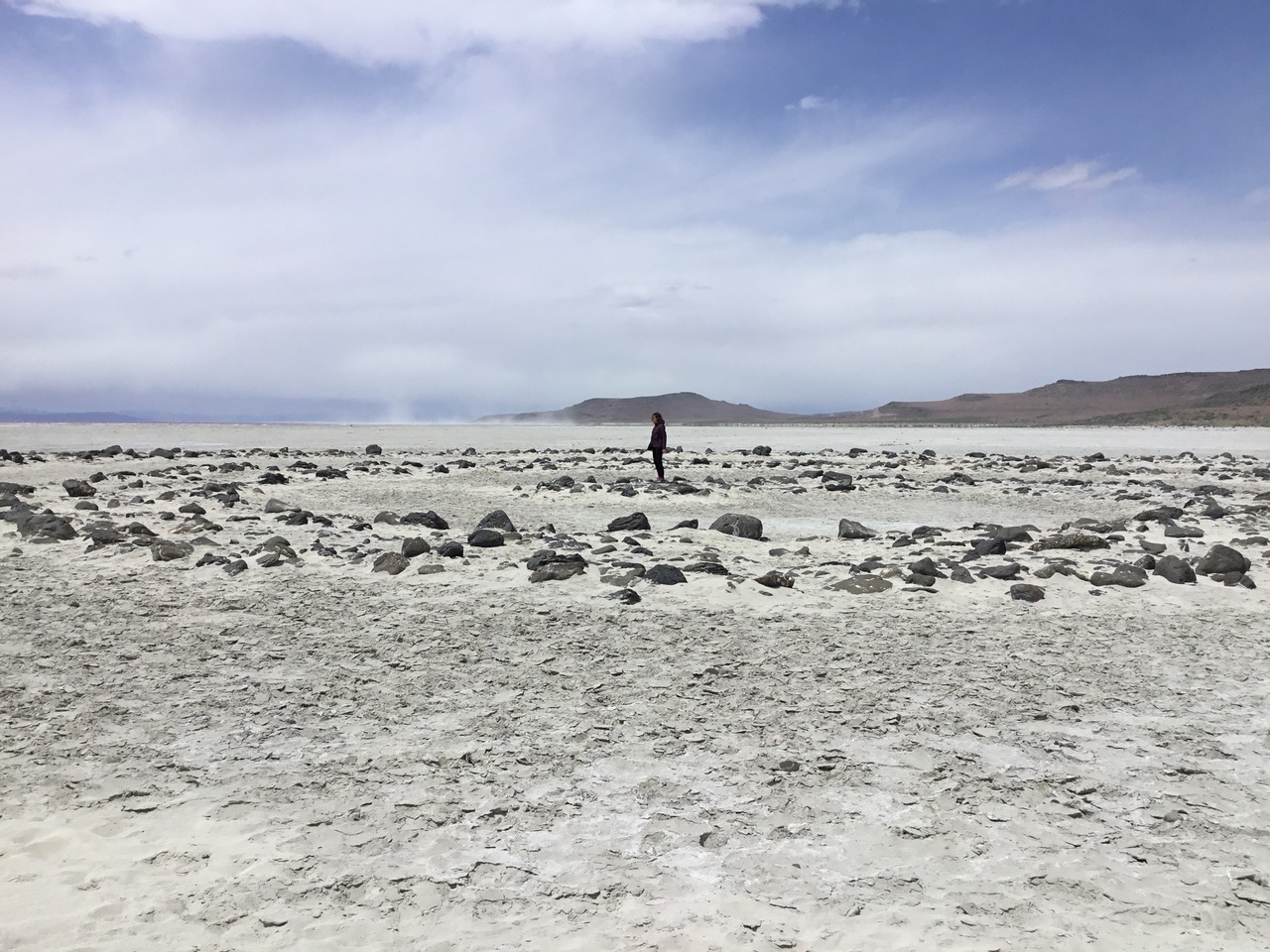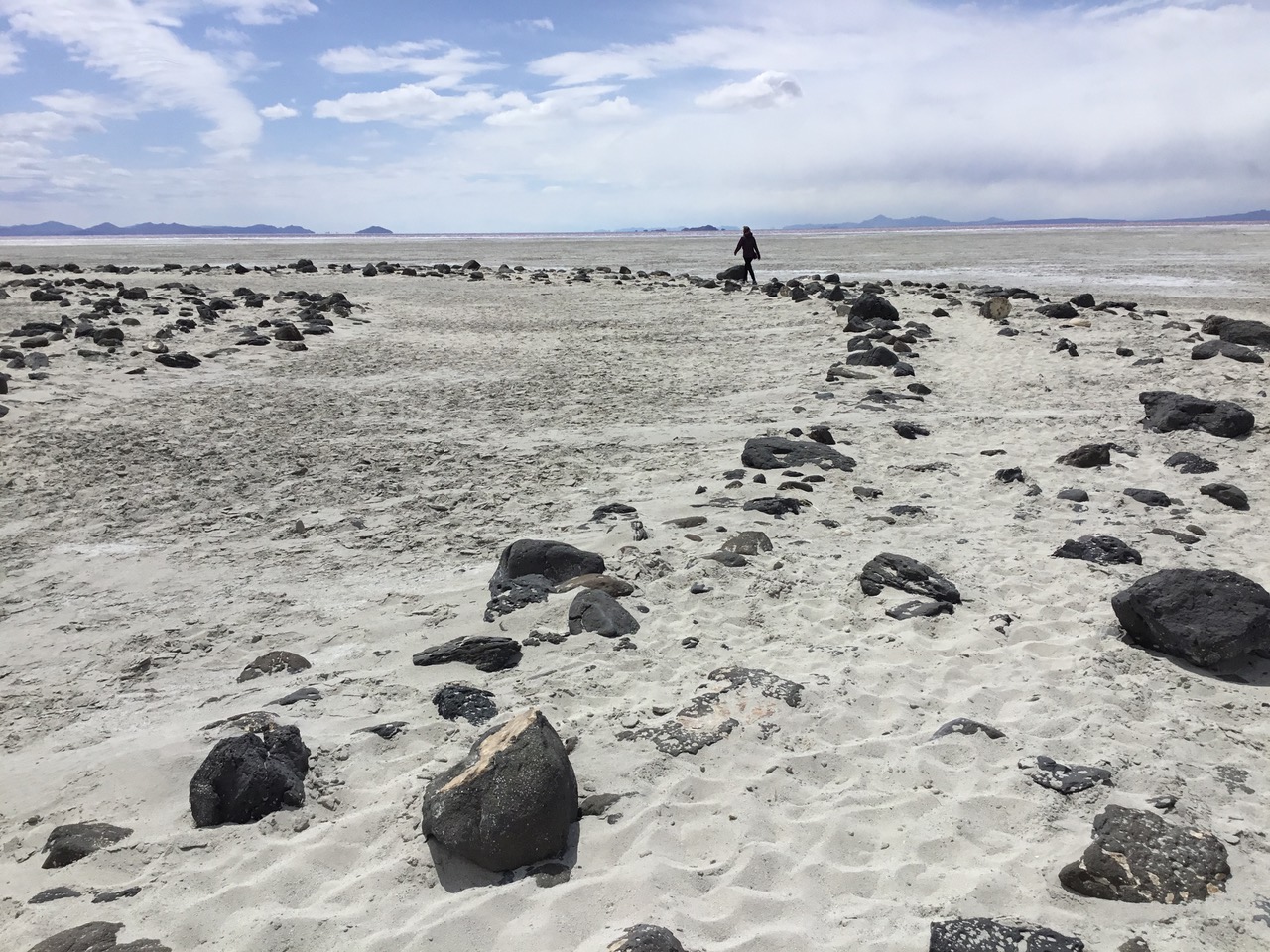
Travelogue: Spiral Jetty by Robert Smithson
Visit to Spiral Jetty by Robert Smithson, from Anne's report
Spiral Jetty on Monday 20 May 2024
On Monday 20 May, we set off from our residence in Idaho to visit Robert Smithson's Spiral Jetty. In 1970, using dump trucks, a tractor and a front loader, Smithson realised some six thousand tonnes of black basalt rock and earth from the adjacent shoreline to form a spiral 1,500 feet long and about 15 feet wide, winding counterclockwise into the lake. In 1972, Spiral Jetty submerged, only to resurface and become visitable 30 years later.
At the bottom
After a fairly long drive on a gravel road for about 40 minutes, we turn a corner. Suddenly you see Spiral Jetty lying at the bottom of the huge Great Salt Lake. The water of the salt lake we see in the distance is pinkish-purple in colour. The wind is brisk and it is quite chilly. Unlike Sun Tunnels and Double Negative, we are not alone here. At least 15 other visitors pass by during our 1.5-hour visit.
I was always under the impression that Spiral Jetty would be huge, but the immensity of the Great Salt Lake makes it look like a relatively small operation. The basalt blocks lie at the bottom of the lake and sand has collected between the stones. This makes the contours of the work less sharp, but still recognisable. We had heard from Dia Art Foundation and Holt/Smithson Foundation that a big problem is that visitors take stones with them as mementos of their visit. In doing so, not only does “nature” slowly erase the work, as Smithson had intended, but human intervention brings an acceleration to this process of decay.
Soft sand, wind, sulphur
Once downstairs, we experience that the work is quite a size after all. We feel small. It is difficult to make our way through the soft sand and basalt blocks to the centre of the spiral. Meanwhile, the wind whipping around our ears also makes us lose our bearings somewhat. At one point, we also smell the lake, which is somewhere between sulphur and chemical industry. In any case, it does not smell good.
In the distance, the waterline can be seen and the wind causes huge salt clouds and foam balls to skim over the salty sandy plain. We walk to the waterline, across a plain of sand and salt crystals to see the reddish-purple colour up close. But it is difficult to properly perceive the colour up close. The smell is more intense, though. The landscape makes an otherworldly impression.
Industrial landscape
Since we more or less circled the Great Salt Lake, we got a good idea of the surrounding landscape and how humans use and exploit it. Along the way, for instance, we encounter the large copper mine Bingham Coppermine, several salt mining fields, sand and stone mines and several military bases. We begin to understand better and better why Smithson chose this location to create a work. In this location, many of his interests came together: geology, entropy, science fiction and (post)industrial landscapes.
Want to know more about this artwork? Check out the Holt/Smithson Foundation website and the Dia Art Foundation website.


